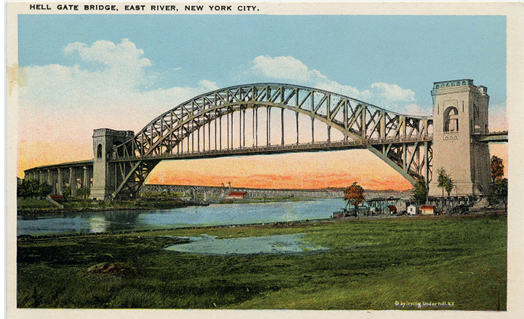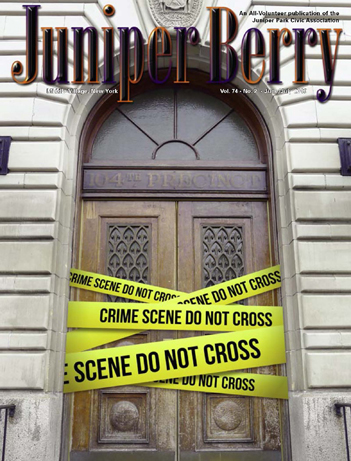It is nearly impossible to tell exactly when and where a major construction project such as the NYCR began. We do know that grading and other preparations started around 1910. The work was largely completed by 1917. The Pennsylvania Railroad (PRR) used its own construction forces as well as outside contractors. The latter included Native Americans who hung iron on the bridges.
The resources put forward by the Pennsylvania were organized into two divisions: the East River Bridge Division (ERBD), and the Southern Division (SD).
The ERBD consists almost entirely of elevated structures, six in all. From north to south they are the Bronx Kill Bridge, Randall’s Island Viaduct, Little Hell Gate Bridge, Ward’s Island Viaduct, Hell Gate Bridge, and the Long Island Viaduct. All put together this amounts to almost exactly 10,000 feet of bridges and viaducts.
The Hell Gate Bridge was designed by noted bridge builder, Gustav Lindenthal. Because of his knowledge of the bridges, the PRR retained Lindenthal to oversee the construction of the ERBD. The Pennsylvania used its own engineers, however, to manage work on the Southern Division (SD).
There were many uncertainties about the project that went right down to the wire before resolution. One of the biggest was whether the NYCR should be four tracked rather than two tracked. Ultimately, it was built for two tracks but made expandable for four.
(It never was four tracked south of Sunnyside Junction; that segment technically belonged to the LIRR and in recent years, it has been singled tracked.)
The big arch bridge could not accommodate more than four tracks. Quite a few bridges on the route to south Fresh Pond Junction were built for easy conversion to four tracks. And, the land for expansion had already been secured. The difference was that a right of way 40 feet wide was required for two-track operations, or 80 feet to operate a four-track railroad.
What is a Hell Gate any way? The Hell Gate or Hell’s Gate is a narrow turbulent body of water that connects Long Island Sound with the East River. It may have received the name from early Dutch sailors, and could be interpreted as “Hell’s Gate” or “Bright Passage.”
The Juniper Swamp Obstacle
Problems plagued the Southern Division (SD) as the Juniper Swamp proved more challenging than expected. Among the most serious was the difficulty of digging a cut through a swamp whose sides were higher than the cut itself. All matter of material was thrown into the bottom of the cut to stabilize it.
No matter what was deposited it soon disappeared in the bottom of the cut. Pilings, timbers, debris, and concrete slabs were sunk into the abyss never to be seen again. The most troublesome section of the SD was from Caldwell Avenue to Fresh Pond Junction.
Electrification
Another important decision was whether to electrify the entire line. This would satisfy the City’s pollution concerns about using steam locomotives. The NYCR settled on using an 11,000-volt AC electrical system that was compatible with the systems used by the PRR and the LIRR.
The electricity was supplied via an overhead catenary wire system, from a power company owned power plant in Connecticut. In railroad yards and tunnels power was obtained from third rails.
The electric power era on the NYCR lasted from 1917 with passenger service over the Bridge and down into Sunnyside Yard and Penn Station; and on the freight line to Fremont Tower and ultimately the Bay Ridge Car float bridges beyond.
Electric power supplanted steam power on the entire route in 1927. Electric power was suspended, however, as a consequence of being folded into the Penn-Central merger in 1968, but resumed in 1996 with creation of Amtrak (who owns the Hell Gate bridge and associated trackage). Despite the City’s best interests, the Pennsylvania and Long Island Railroads continued to operate steam locomotives for local freight movements, and other specialized activities in Brooklyn and Queens.
The Hell Gate Bridge contains 1,174, 000 rivets, more steel than the Manhattan and Queens Borough bridges combined.
Next Issue: Contemporary Operations




